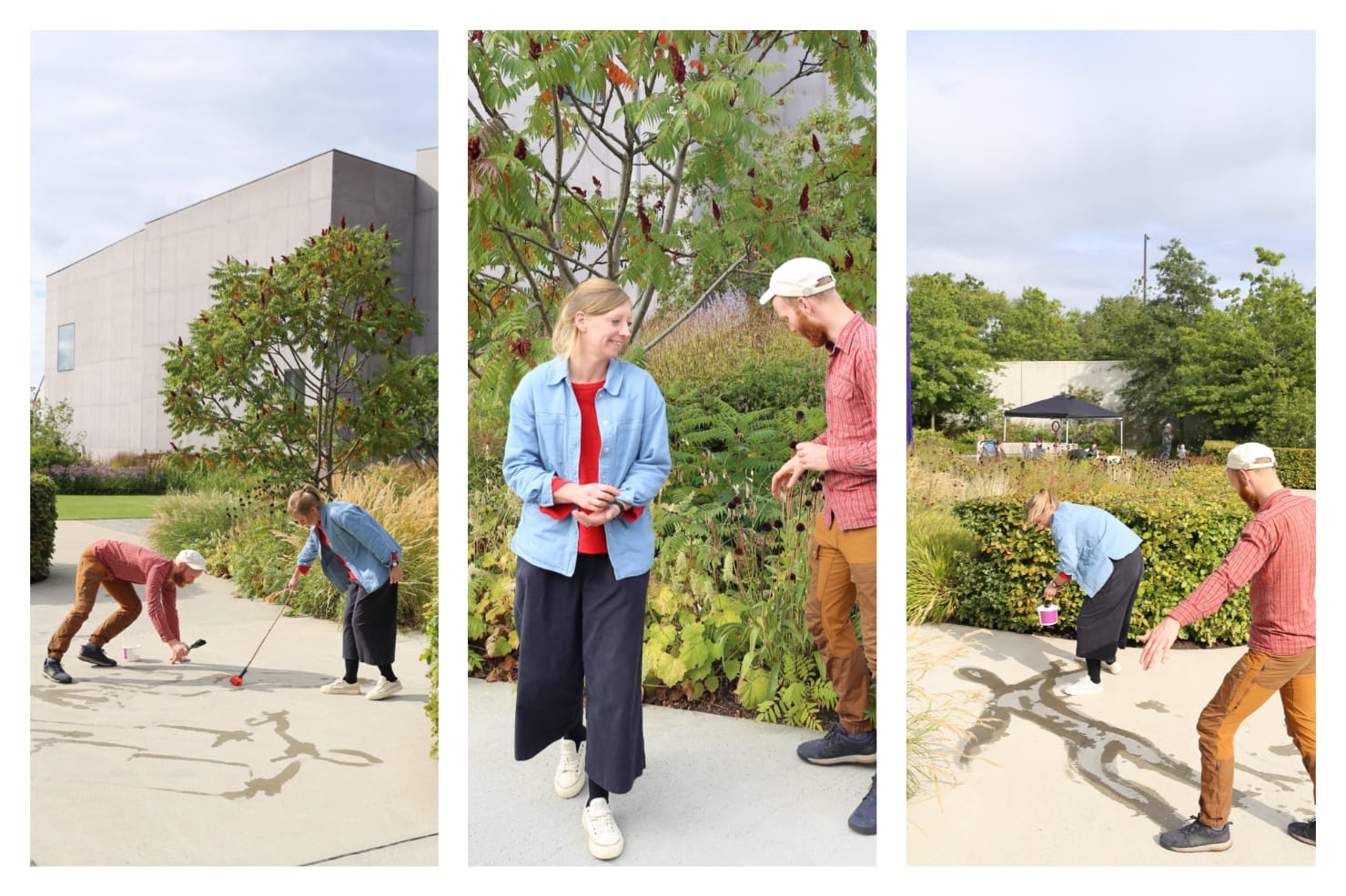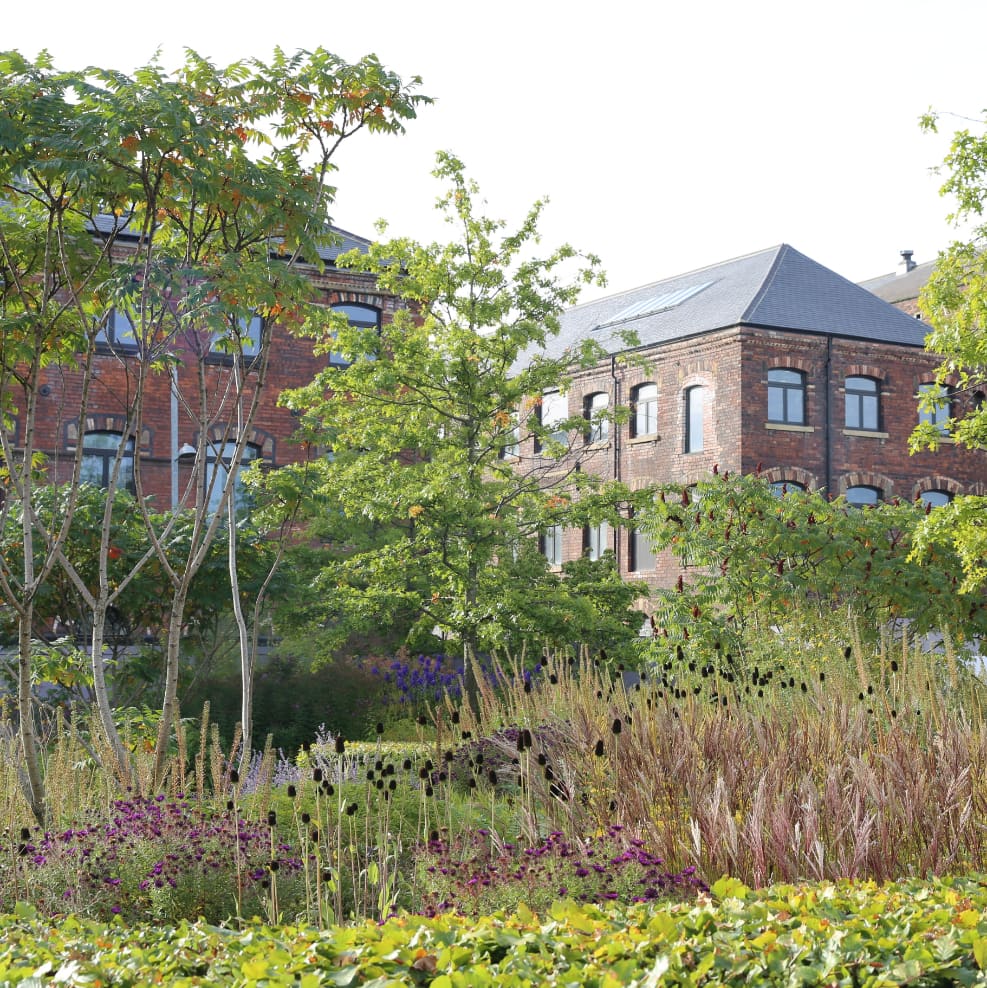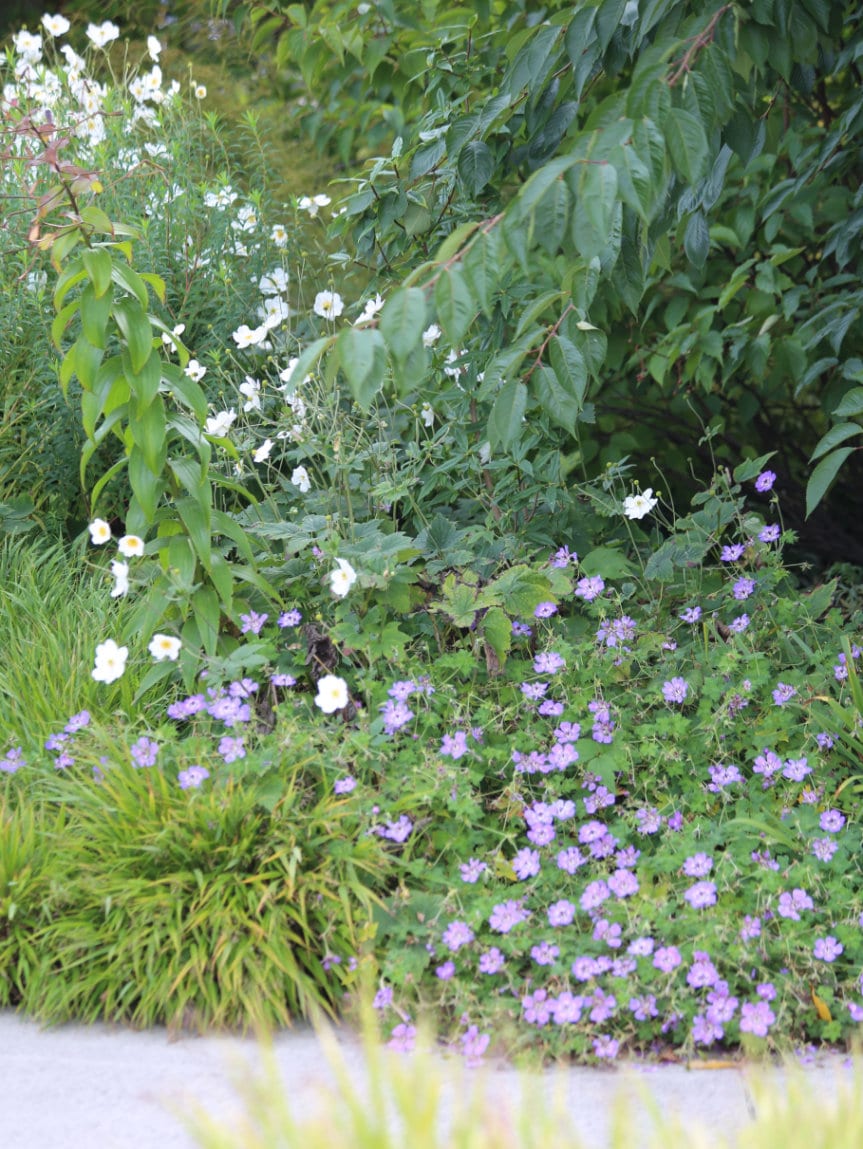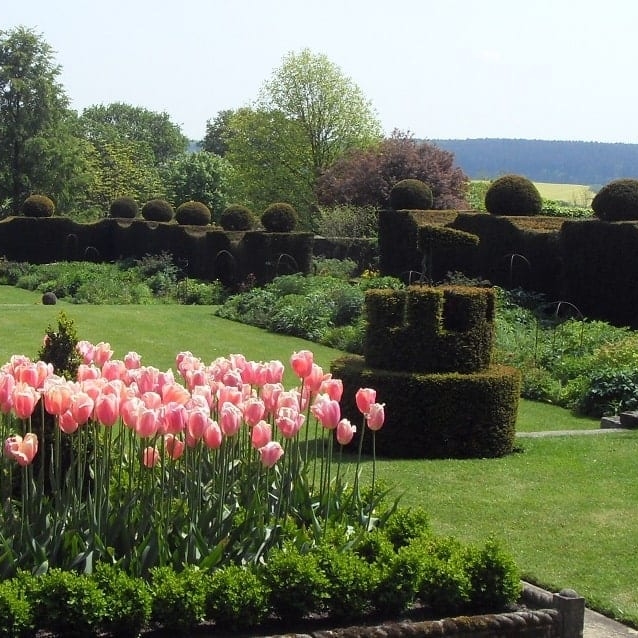The Hepworth Wakefield garden
In the past few years, the north of England has gained a number of exciting horticultural offerings. We now boast the new RHS Garden Bridgewater, the Grey to Green scheme in Sheffield city centre where I now work, and major developments at Chatsworth. The latest addition to the list is the new garden at the Hepworth Gallery in Wakefield, designed by Tom Stuart-Smith.

Katy Merrington is the Cultural Gardener there. I headed over the border from South Yorkshire into West Yorkshire, to meet Katy in the garden for a coffee on a bright Saturday morning in late September.

The garden sits between the gallery, made of huge minimalist concrete trapezoid blocks, and the Victorian red brick Rutland Mill building, now being regenerated after 20 years of dereliction. The old gatehouse to the mill, where workers would check in and out of shifts, is now the garden cafe.

Having navigated busy industrial estates and highways to reach the garden, we were hit by a sense of sanctuary and safety when we arrived. The garden treads a line between wild abundance and plush formality. The structural layout of the garden was inspired by the modernist sculptures of Barbara Hepworth, and within that the planting feels wild and free. Crab apple trees were dangling their fruit among rich velvet asters, swathes of grasses and seedheads caught the morning light, while beautifully clipped hedges and fine lawns provide perfect contrast to the naturalistic planting.


Katy gardens the space with the highest level of care and strict attention to detail. She orchestrates a small army of volunteers, knitting the garden into the community it was created for. Unusual for a garden of this standard in a city centre location, the space is completely open to the public, free of charge, 24 hours a day. It’ll be exciting to see the ripple effect of this brave public project, as the regeneration of post-industrial urban areas continues throughout the north of England.

The garden is much loved by the diverse range of people that use it. The area of South and West Yorkshire that Katy and I live in, is not rich in large stately homes, private estates, or well-funded public gardens. Some visitors to the garden have never seen a garden like this before. The striking seasonal change that herbaceous perennials provide, was so dramatic that some people thought Katy was swapping the plants out for new ones every few weeks.

While in the area, if you’re looking to embrace the stereotype of Yorkshire folk being tight with money, there are two local establishments you can be sure to find some bargains. Not far from the Hepworth, is the legendary Hampsons Plant World. A seemingly endless chaotic maze of a garden centre, complete with an extensive cafe, ice cream parlour, florist, tropical fish, pie shop, deli, and bicycle repair. Almost all plants are permanently 50% off the marked price. It’s not for the faint hearted. The other recommendation is the Yorkshire Flowerpots Factory Shop, in the grounds of the factory, where the seconds are sold off at a fraction of the RRP.

Photography by Owen Hayman. Thanks to Katy Merrington for showing me around.
First published October 2022
Owen Hayman
Owen joined the Bestall & Co planting and aftercare team in spring 2019. He is an RHS qualified horticulturist, holding a full Level 3 Diploma in Horticulture, and recently came in the top 3 at the Northern Regional Final of The Young Horticulturist of the Year 2019. After first doing a foundation diploma in Fine Art, he went on to gain a degree and masters in Plant and Soil Science from the University of Sheffield in 2014. Owen worked as a researcher on various field research projects in Alaska, Panama and Borneo. When not away in the field, he became obsessed with visiting gardens and nurseries across the British Isles and the Netherlands, developing his own garden, and then taking on a walled allotment garden as a personal project. He realised his true passion was in horticulture, and so moved away from academia and into the world of specialist plant nurseries and professional gardening.
Owen is now studying the Wisley Diploma, but continues to write articles for us on a monthly basis, and we're delighted to maintain contact with such a passionate and knowledgable plantsman.




